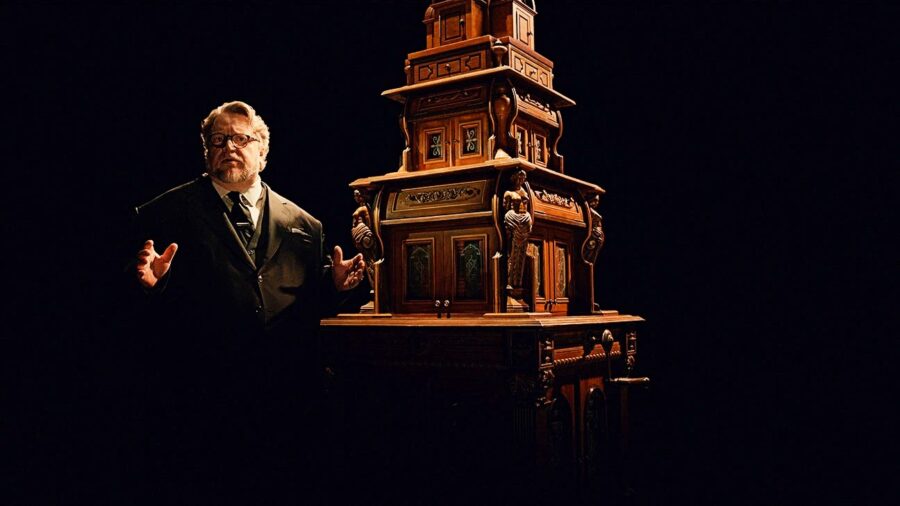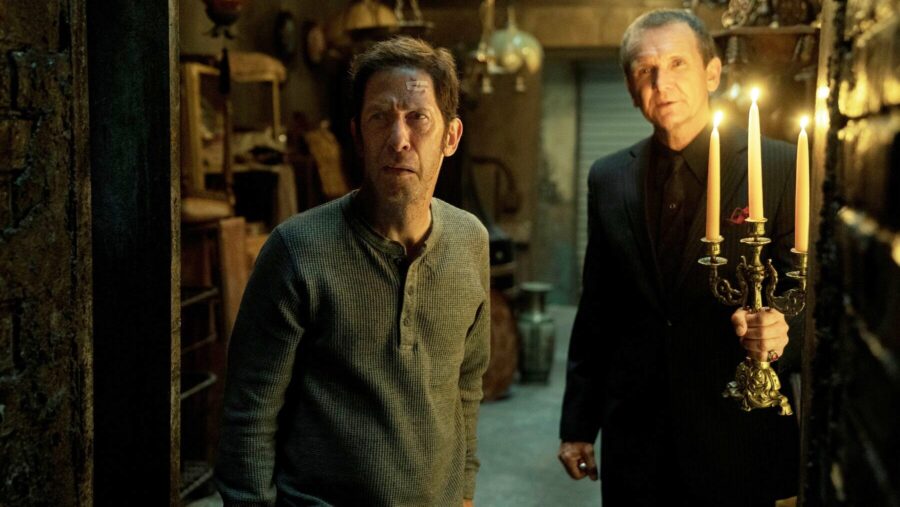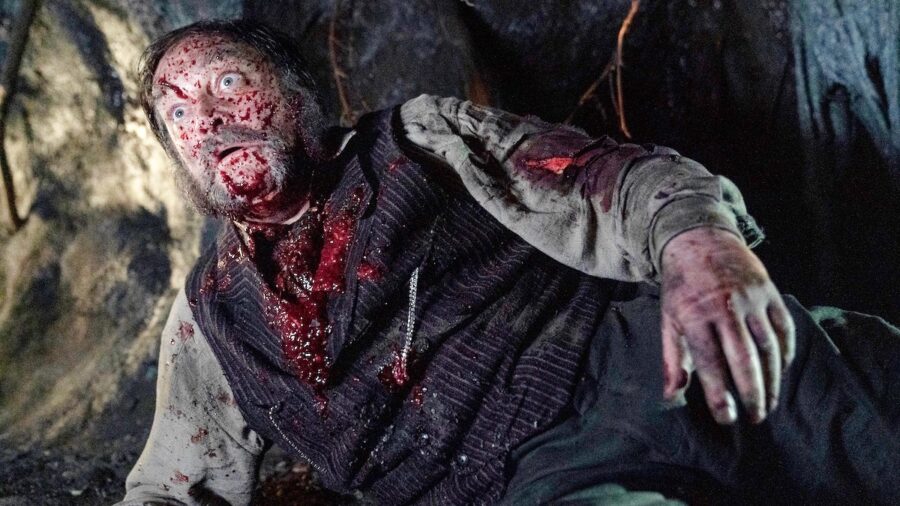Guillermo del Toro’s Cabinet of Curiosities Review: Enthusiastic, Infectious Horror With Just A Bit Of Dodgy CGI
Guillermo del Toro’s Cabinet of Curiosity is a collection of enthusiastic, gory morality tales.
Guillermo del Toro is somewhat notorious for developing fantastical, ambitious projects that ultimately do not get made, to the point that there is an entire Wikipedia page titled “Guillermo del Toro’s unrealized projects.” In all likelihood, he probably doesn’t have more abandoned projects than any other major filmmaker, but his palpable enthusiasm for his work and willingness to speak publicly about them is what makes it seem like he does. It is somewhat of a relief that not only did the new Netflix series Guillermo del Toro’s Cabinet of Curiosities actually get made, but that the director’s sense of joy in horror remains as strong as ever.
Guillermo del Toro’s Cabinet of Curiosities Review

SPOILERS FOR THE FIRST TWO EPISODES OF THIS SHOW FOLLOW

Guillermo del Toro’s Cabinet of Curiosities is an anthology series of eight episodes, two of which were released today and the rest of which will land on Netflix in the days leading up to Halloween. It is an interesting release strategy for the streaming platform, which famously encourages viewers to binge-watch series by releasing them in their entirety, and perhaps one Guillermo del Toro had some hand in. Combined with The Sandman’s odd, post-release standalone episode, it feels like Netflix may be reconsidering how they do some things.
However, back to Guillermo del Toro’s Cabinet of Curiosities: the filmmaker wrote two of the episodes, but primarily serves as a curator and creative producer. He has recruited a number of idiosyncratic filmmakers to direct the episode, many of them with horror-adjacent bonafides; this includes Ana Lily Amirpour (A Girl Walks Home Alone at Night), Vincenzo Natali (Cube), and Panos Cosmatos (Mandy). However, as the title makes clear, this is Guillermo del Toro’s show and at least the first two episodes are heavily indebted to his gothic aesthetic.
It is also made clear by Guillermo del Toro himself appearing on-screen to introduce each episode, a la Rod Serling in The Twilight Zone, Alfred Hitchcock in Alfred Hitchcock Presents, and perhaps most awkwardly, Todd McFarlane in Todd McFarlane’s Spawn. The individual episodes themselves also contain one of the most intriguing and eclectic casts of any series this side of FX’s Fargo, including Robocop’s Peter Weller, Mythic Quest’s F. Murray Abraham, Silicon Valley’s Martin Starr, Harry Potter’s Rupert Grint, and Watchmen’s Tim Blake Nelson.

Tim Blake Nelson stars in the first episode of Guillermo del Toro’s Cabinet of Curiosities (titled “Lot 36” and directed by del Toro’s long-time cinematographer Guillermo Navarro) as a down-on-his-luck veteran who spends his days bidding on abandoned storage units and listening to alt-right radio propaganda. Nelson is a gifted character actor who can portray both benevolent, goodhearted sincerity or deep, angry prejudices, and we get the latter here. As one could expect in a horror series, his greed leads him to some dark places, which in this case means a literal tentacled demon that has been chained in a hidden chamber for decades.

The second episode (titled “Graveyard Rats”) stars David Hewlett (reunited with Cube director Vincenzo Natali) as a loquacious, Bible-quoting grave robber whose phobia of rats inevitably leads him to an underground confrontation. This episode is much more of a one-man show, with Hewlett dependably holding his own against both a reanimated corpse and some giant rats (plus a whole lot of smaller ones).
For all that one episode seems to be set in the current time period and the other is a throwback to Guillermo del Toro’s beloved Victorian era, both share many elements. Both hint at dark, supernatural cults and contain a lot of Catholic imagery, which is part and parcel of del Toro’s whole thing. On the other hand, that both episodes have a plot primarily motivated by a violent loan shark threatening the protagonist into action feels a little repetitive just two episodes in. But fundamentally, it seems the show is hearkening back to an older type of horror than is currently in vogue.
Guillermo del Toro’s Cabinet of Curiosity is surprisingly graphic, proudly showing off partly rotted corpses and a whole lot of rat blood (though the CGI tends to be a little dodgy). That makes sense, as at least the first two stories are essentially moral tales, in which the greed, racism and/or moral failings of the protagonists doom them to a gory fate. It is a different kind of horror than we currently see in the psychological examinations of “elevated horror” films like Midsommar or The Babadook. Unsurprising, considering the director’s most recent movie is maybe the weirdest morality tale ever considered a children’s story.
However, it has always been clear that Guillermo del Toro is a bit of a traditionalist when it comes to the trappings of horror and this new show is no exception. Fortunately, just like him, its enthusiasm for storytelling is infectious.












